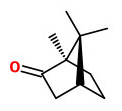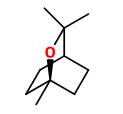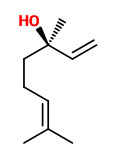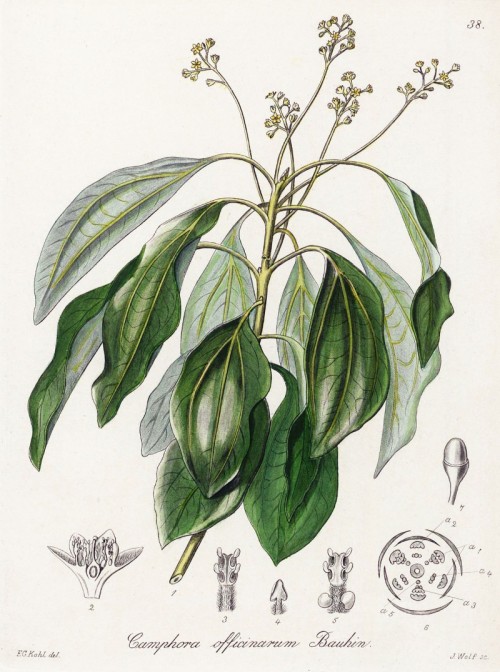Dies ist eine alte Version des Dokuments!
Cinnamomum camphora L. - syn. Laurus camphora L., Camphora officinarum Nees - Lauraceae
camphor tree, camphor laurel, Kampferbaum
Native to South China, Japan, Taiwan, naturalized in India, Australia, Africa, cultivated; evergreen stout dense-topped tree, to 20(40)m, with enlarged base; twigs and bruised leaves having marked camphor odor; buds inclosed by large imbricated scales; leaves alternate, entire, long-petioled, ovate-elliptic, acuminate, pinkish on the young growths, smooth and shining above, whitish or glaucous beneath; flowers yellow, in axillary panicles shorter than the leaves; perianth-lobes deciduous in age.
„This species is the main source of camphor, which is derived from chipped wood of the stems and roots and also from branchlets and leaves by steam distillation. It contains a fixed volatile oil. The plant is used medicinally as a stimulant, antispasmodic, antiseptic, and rubefacient. It also is used in the manufacture of celluloid. The wood is beautifully grained, light brownish, easily polished, and used for furniture, cabinets, and interior finish in buildings.“
http://www.efloras.org/florataxon.aspx?flora_id=2&taxon_id=200008697
„The chemical variants (or chemotypes) seem dependent upon the country of origin of the tree. The tree is native to China, Japan, and Taiwan. It has been introduced to the other countries where it has been found, and the chemical variants are identifiable by country. e.g., C. camphora grown in Taiwan and Japan is normally very high in linalool, often between 80 and 85%. In India and Sri Lanka, the high camphor variety/chemotype remains dominant. C. camphora grown in Madagascar, though, is high in 1,8 cineole (averaging between 40 and 50%). The essential oil from the Madagascar trees is commercially known as ravintsara.“
http://en.wikipedia.org/wiki/Cinnamomum_camphora
Ho-leaf oil is obtained from the leaves and small twigs of Ho-Sho tree (East Linalool Tree, Cinnamomum camphora Sieb. subsp. formosana var. orientalis subvar. linaloola Hirota) in 1.0-1.2% yield by steam distillation.
Main component is (-)-linalool, minor ones e.g. methyl vinyl ketone, methyl isobutyl ketone, (+)-alpha-pinene, beta-pinene, myrcene, camphene, mesityl oxide, (+)-limonene, cis- and trans-ocimene, cineole, p-cymene, n-hexanol, cis-3-hexenol, cis- and trans-linalool oxide, alpha-terpineol, (+)-cis and (+)-trans-2,6,6-trimethyl-2-vinyl-5-hydroxytetrahydropyran, citronellol, camphor, (+)-tagetonol (= (+)-3,7-dimethyl-3-hydroxy-1-octen-5-one) and (-)-trans-hotrienol (= (3R)-(-)-trans-3,7-dimethyl-3-hydroxy-1,5,7-octatriene).
[Yoshida, Toshio, et al. „Minor Constituents of Japanese Ho-Leaf Oil: The Structures of (+)-Tagetonol and (‒)-trans-Hotrienol.“ Agricultural and Biological Chemistry 33.3 (1969): 343-352] http://www.tandfonline.com/doi/pdf/10.1080/00021369.1969.10859320
 D-(+)-camphor |  1,8-cineole |  (R)-(-)-linalool |
„The oils of four species of Cinnamomum from Madagascar were studied… C. camphora was of the 1,8-cineole type (58-63%). “
[Chemical composition of leaf oils of Cinnamomum from Madagascar: C. zeylanicum Blume, C. camphora L., C. fragrans Baillon and C. angustifolium. Chalchat, J. C., Valade, I., Journal of Essential Oil Research, Vol.12(5), 2000, 537-540]
„The essential oils of two varieties of Camphor tree (Cinnamomum camphora Nees & Eberm, Lauraceae), known as
Hon-Sho and Ho-Sho cultivated in experimental stands in Southern Brazil were studied. The essential oils were
obtained from the leaves and twigs of young plants by hydrodistillation. … The main components
identified were linalool in the Ho-Sho and camphor in the Hon-Sho…The Hon-Sho leaf oil obtained in Caxias do Sul showed 31 components. 94% of the composition is made by monoterpenes and 2% by sesquiterpenes. Oxygenated terpenes represented 81% of the total, camphor being the main component (68%) and linalool the second most important (9%). The camphor content was similar to that described for Pakistan (Sattar et al., 1991) and Ivory Coast (Pelissier et al. 1995) leaf oils. The Ho-Sho leaf oil was almost exclusively formed by linalool (95%), with no other constituent representing more than 1%. In this the product is similar to the most common compositions described in the literature (Lin and Hua, 1987; Tao et al., 1987; Fujita et al. , 1974; Dung et al., 1993), where linalool content varied from 66 to 91%. Contents of cineol and nerolidol described for cetain samples (Lin and Hua, 1987; Nguyen et al., 1994) could not be confirmed in Brazilian samples.“
[Essential Oils of Camphor Tree (Cinnamomum camphora Nees & Eberm) Cultivated in Southern Brazil. Caren D. Frizzo, Ana C. Santos, Natalia Paroul, Luciana A. Serafini, Eduardo Dellacassa, Daniel Lorenzo, Patrick Moyna, Braz. arch. biol. technol. 2000, Vol. 43( 3 ), 313-316]
http://www.scielo.br/pdf/babt/v43n3/v43n3a11.pdf
„The camphor tree, Cinnamomum camphora (L.) Nees et Eberm., is a major environmental weed in parts of eastern Australia, particularly in northeastern New South Wales. It occurs in this region in two chemotypic forms, discriminated on the basis of leaf oil: camphor and 1,8-cineole. Oil was extracted from various parts of trees of each of these chemotypes: leaf, fruit, branch, trunk and root. Analysis of the oil revealed that, for the camphor-type, camphor content was greater in leaves than in other tree parts, where cineole and safrole were also present in substantial proportions; and, for the cineole-type, 1,8-cineole, which with lesser quantities of sabinene and citronellol dominated the leaf oil, is reduced in significance in the trunk where camphor is also an important constituent.“
[The essential oil of Cinnamomum camphora (L.) Nees and Eberm. - variation in oil composition throughout the tree in two chemotypes from eastern Australia. Stubbs, B. J., Specht, A., Brushett, D., Journal of Essential Oil Research, Vol.16(1), 2004, 9-14]

Cinnamomum camphora as Camphora officinarum
Kohl,F.G., Die officinellen Pflanzen der Pharmacopoea Germanica, t.38 (1891-1895) [F.G.Kohl]
http://plantgenera.org/species.php?id_species=244166
